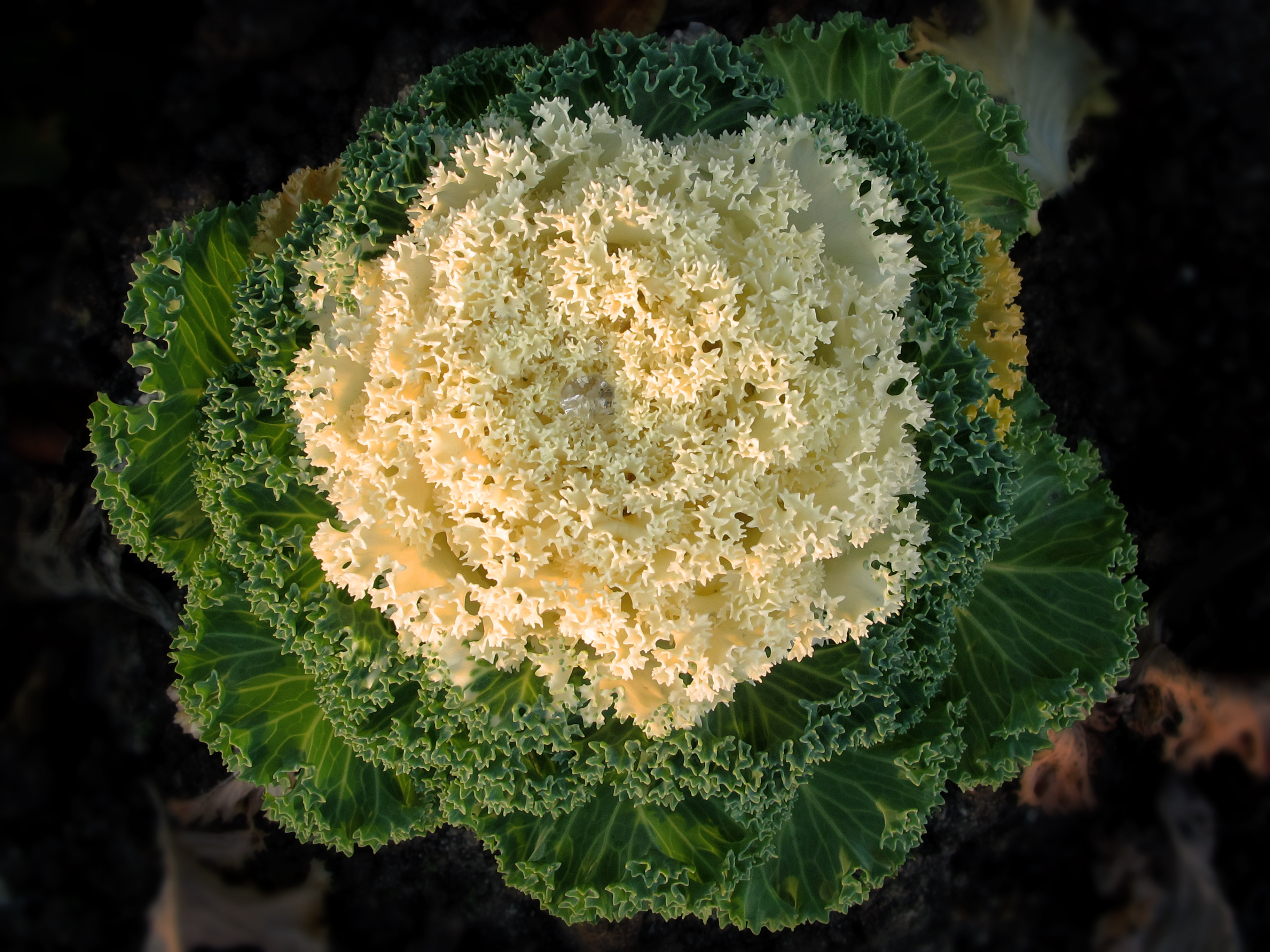Students who have traveled past the fountains in the last few weeks have likely noticed the arrival of a few potted plants. While some of these plants bear a resemblance to lettuce, please note that they are not meant for eating.
The lettuce-looking plants are actually ornamental kale, also called ornamental or flowering cabbage.
Ornamental kale is member of the species Brassica oleracea, which includes kale, cabbage, broccoli, cauliflower, brussels sprouts, kohlrabi, and collard greens.
The specific type of Brassica oleracea seen near the fountains are able to survive cooler weather than their garden-variety counterparts. They prefer full sun, but require temperatures that do not frequently exceed 80 degrees.
As their name suggests, these plants are grown for their aesthetic appeal, rather than consumption.
In the right conditions, ornamental kale will exhibit a spectrum of white and purple colors, emanating from the center of otherwise green leaves. Throughout the fall, as night temperatures drop, the foliage color generally darkens.
When compared to other plants, the leaves of ornamental kale display a unique ruffled texture, a characteristic also shared by vegetable kale.
It is for these reasons that Facilities Management utilizes ornamental kale, along with a few flowering plants such as chrysanthemums, to spread extra color into the months of fall.
Although potted plants are somewhat more susceptible to frost, the use of ornamental kale, since it is adapted to cooler weather, allows for a prolonged duration of color in the fall. As temperatures grow colder, the plants will enter a period of dormancy in order to survive the winter.
Ornamental kale, and other members of Brassica oleracea, are naturally biannual plants, meaning that their lifecycle lasts two years. The first year they grow basic vegetative structures, such as roots, stems and leaves. In their second year, after a necessary period of cold temperatures, these plants will flower.
When grown for agricultural purposes, the foliage of kale and cabbage are harvested during the first year.
The plants will grow to between twelve and eighteen inches tall, with cabbage leaves forming a head, and kale leaves simply remaining upright.
Ornamental kale and cabbage are edible, yet unlike the vegetable varieties, they have not been developed for taste.
The uncultivated form of Brassica oleracea is native to coastal Western Europe. Due to its affinity for salt and lime, the plant is most commonly found today along limestone sea cliffs, such as the Cliffs of Dover and others along both sides of the English Channel.
Over a long history of cultivation, Brassica oleracea has developed into seven main groups of cultivar. Ornamental kale and cabbage are members of the Acephala group.
The beauty of these plants is fleeting, and as winter draws closer they will disappear into the pots that hold them. However, students can safely anticipate their return the following year.

